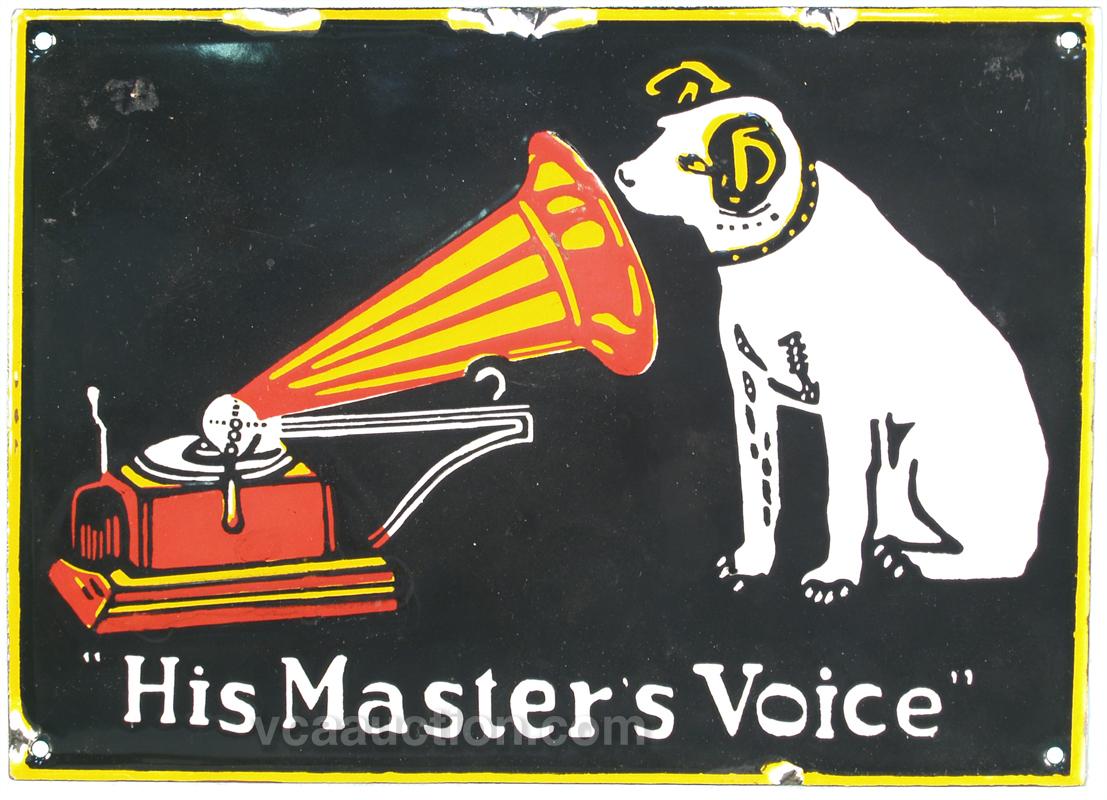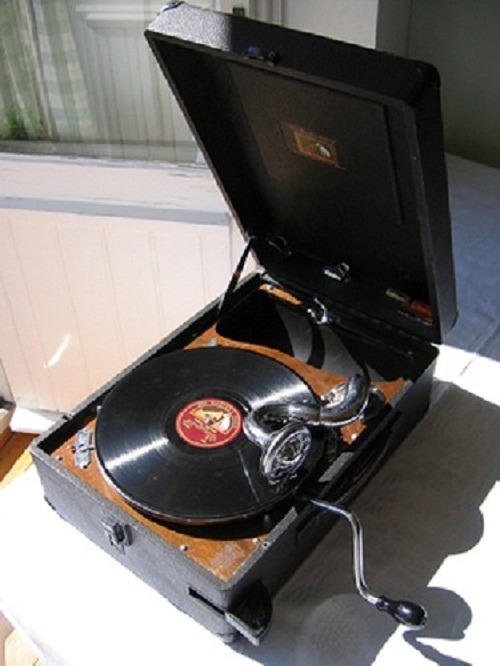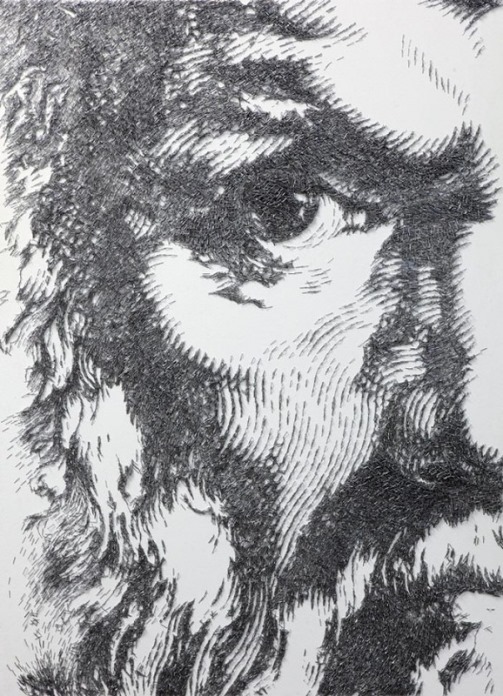History of painting His Master’s Voice
History of painting His Master’s Voice
Perhaps, some of you have seen this picture, in which the dog is listening to the sounds of gramophone pipe. This painting is called “His Master’s Voice’, painted by the English artist James Francis Barraud. In 1884, Herbert (Mark) Barraud, who lived in Bristol, picked up a stray dog - a fox terrier and named it Nipper. The dog was named for his penchant for biting the feet of visitors. Terrier was a faithful friend of Barraud. Shortly before his death, Herbert bought a phonograph and recorded his voice on it. Nipper used to listen to the voice, and wondered how it was possible – the owner, sitting nearby, and his voice came out of the black pipe.

Days and nights the fox terrier was sitting near the pipe of the phonograph, pining for his master and hoping that there will be sound of his voice from the pipe
When, in 1895, Herbert died, the dog went along with the phonograph to his younger brother, Francis, as he had agreed to look after the dog. Nipper was taken to Liverpool.
Three years later, in September 1898, Nipper died (they say because of boredom). Scene of waiting for the voice of gramophone indelibly imprinted in the brain of Barraud, and he decided to move it to the canvas.
Barraud tried to present a picture at the Royal Academy exhibition, but the work was rejected by the jury. The artist decided to contact with several magazines, but again failed. The reason for the refusal was “the name of the picture is not clear, what dog makes and why.”
Barraud offered his job even to companies «Edison bell company» (leading manufacturer of cylinder phonograph), but again without success. In response, the company stated: “Dogs do not listen to phonographs!”
One of Barraud’s friends suggested that Francis replaced the black tube phonograph with a more modern model of brass and came up with a shorter name. That could give the best opportunity for its sale.
Barraud visited a newly formed The Gramophone Company and asked to hire a brass pipe to use as a model. Manager Gary Owen, a great lover of art, agreed to buy if Barraud would replace the canvas depicted a gramophone company «Berliner gramophone» to the brand «Edison cylinder machine», produced by the Edison exclusively for the UK market.
Barraud took into account all wishes, and on October 17, 1899 a new version of the picture was ready with a new name, “His Master’s Voice» (His Master’s Voice). Gary Owen bought the painting from the artist for just 100 pounds. And another interesting fact – the Gramophone Company, which bought the picture of Barraud, was the ancestor of well known corporation «Electronic and Musical Industries», known as EMI. But the “adventure” of the picture was not over.
In May 1900, during his visit to London, the inventor of the flat disc record and gramophone Emile Berliner – German-born living in the U.S., saw a painting on the wall in Owen’s office. Berliner immediately contacted with Barraud and asked him to make a copy of the picture, but with a model of his phonograph company. The picture was brought to the U.S. and on July 10, 1900 it was registered in the Patent Office as a trademark of the company.
This trademark Berliner proposed to his partner Eldridge R. Johnson, with whom he worked on improving the phonograph. Johnson’s company distributed a picture Barraud as the gramophone logo to corporations in Central and South America, the Far East and Japan. Nipper appeared in advertisements of gramophones the same year 1900. In addition, in the gramophone Nipper was placed on the official letters and documents of the company, catalogs and disc labels. A label with Nipper was popular until the end of the Second World War.
The artist died on 29 August 1924, at the age of sixty-nine. He wrote about 24 copies of his most famous work for gramophone company branches around the world. In this case, Barraud painted another version of the picture, which replaced the phonograph by record player, and for £ 50 each. Moreover, to obtain copyright permission to update paintings of artist, Nipper was denied (a paradox).
At the same time, the picture was one of Barraud’s most known commercial trademarks in the world used by such “monsters” of the music industry, as HMV, RCA, and JVC.
Although today the corporation EMI uses the mark to identify its stores in the UK and in Europe, the brand His Master’s Voice is still recognized and firmly took its place in the top ten most recognizable brands of the twentieth century.
History of painting His Master’s Voice

The original version of the painting, completed on February 11, 1899 “Dog looking at and listening to the gramophone”
























